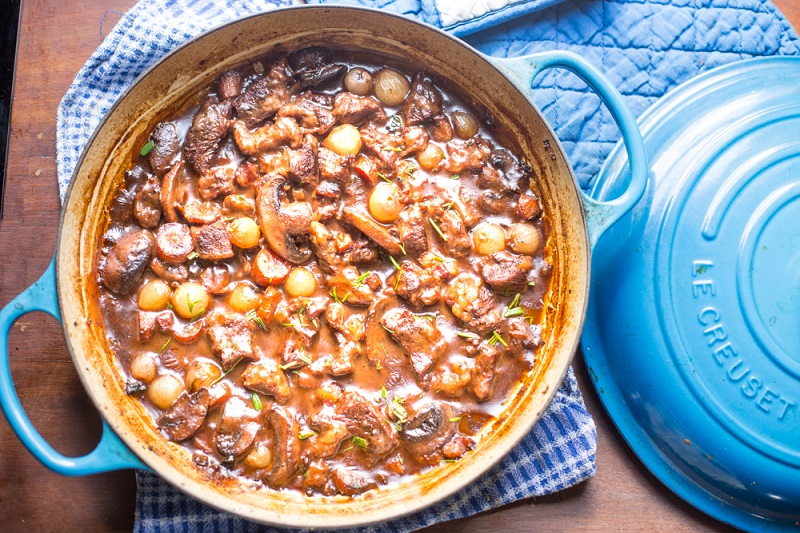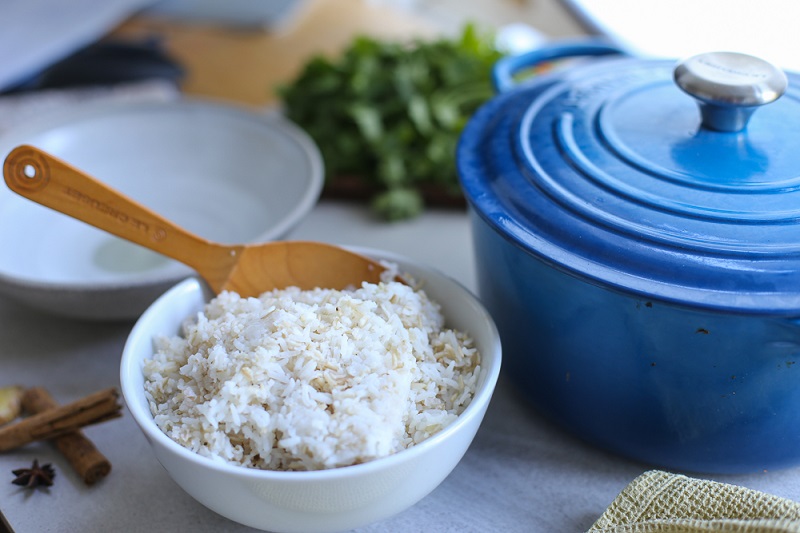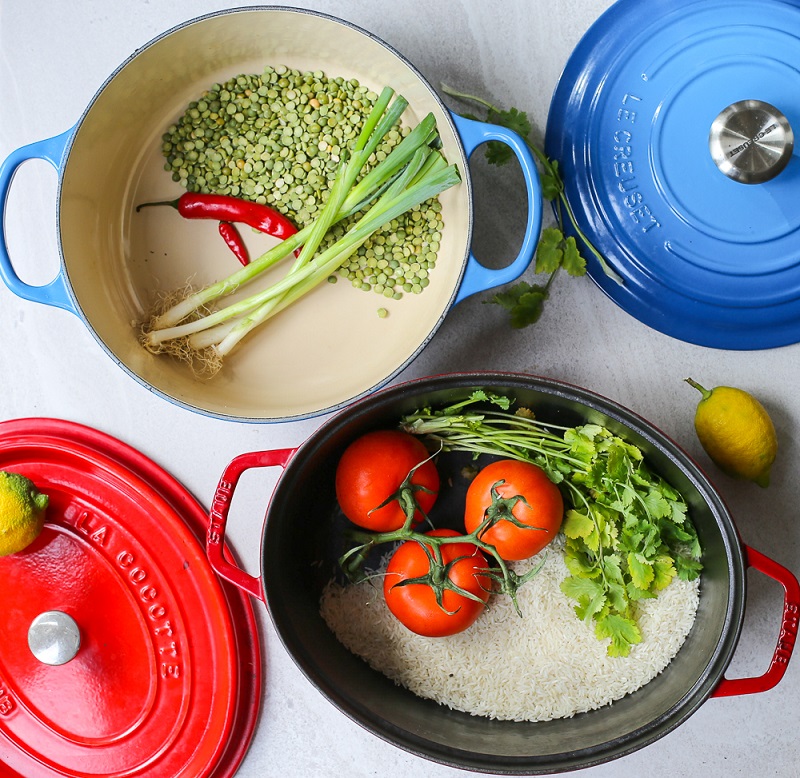
Le Creuset French Oven vs Staub Oval Cocotte, which is the best Winter Warmer casserole?
As wintertime fast approaches, my trusty casseroles are starting to get some good usage. The French Oven cast iron are some of my all time favourite cookware pieces for so many reasons, but mainly their style and versatility. I have always loved how chic the glossy enameled exterior looks - it instantly transforms an ordinary kitchen into one out of a French country farmhouse scene. But it’s the stovetop-to-oven-to-table usage that can make any cook’s life easier, especially during wintertime. The pots act as a mini oven to keep food moist and tender, perfect for braising and slow-cooking. So which French Oven wins the title of Best Winter Warmer Cookware? I compared my Staub Oval Cocotte and Le Creuset French Oven in a few different areas: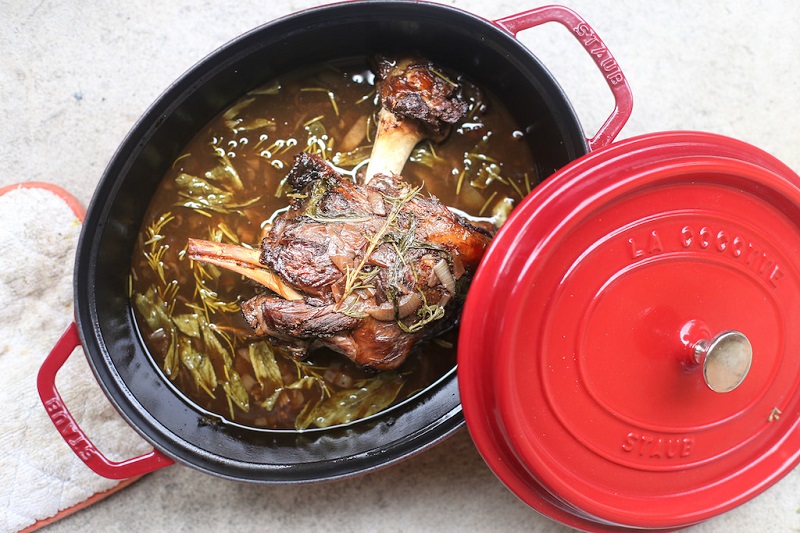
Appearance:
Le Creuset
Always a classic, I just love the elegant Le Creuset and the wide range of colours to suit any style (I’ve got Marseille Blue). I’ve noticed a slight change in width and depth of their classic French Oven, which is what I’m currently comparing with. The handles have also been widened, making stovetop-to-oven-to-table safer and easier. I found the base to have a large enough surface area to brown a lot of meat in only 2 batches – and there was plenty of room left at that, ensuring the pan wasn’t overcrowded. Le Creuset's French Oven size is perfect for a family casserole – 4-8 servings are easily possible in the Le Creuset, yet it isn’t so enormous that it takes up too much room on your stovetop or in storage.Staub
I’m using the oval cocotte which is quite a large piece of cookware - being longer and taller than the Le Creuset. The interior cooking surface is quite different compared to the smooth and glossy enamelled Le Creuset – almost gritty in texture. The Staub would be great for braising larger joints of meat that are awkward to fit into standard cookware, such as a ham bone or leg of lamb. Large, family style casseroles of 10-12 servings are possible due to the extra capacity created by the width and height of the Staub Oval Cocotte.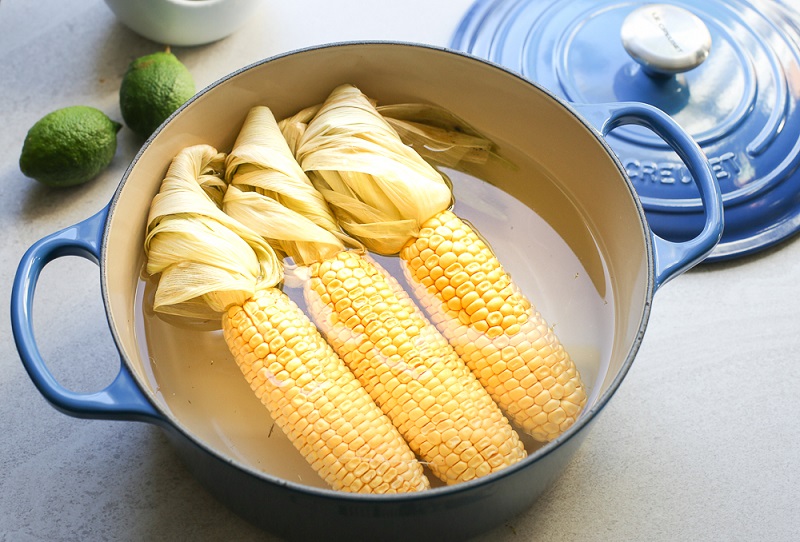
Cooking on the Stovetop:
Le Creuset
I find the Le Creuset to be a real all-rounder, even on the stovetop. I like using the pot to poach eggs or boil corn. Browning meat in the Le Creuset always results in a great colour and crust. I do find that cooking on the enamel is different from a non-stick, in that residue can build up on the surface as you brown or saute ingredients. But remember, this creates a lot of flavour in the finished dish. And this flavour is released into the dish with moisture as it cooks.Staub
The Staub Oval Cocotte's inner hardened enamel performs very well with browning and sauteing. The pan’s oval shape means that it does not fit on a burner, however I’ve never noticed any hotspots or areas that didn’t brown as the heat is evenly distributed. For cooking at length, I would use the Staub in the oven after the initial browning on the stovetop, due to the awkward shape for cooking on the stovetop.Oven Results:
Le Creuset
I’ve had slightly better results with the Le Creuset in the oven than on the stovetop. I find that sauces thicken and reduce beautifully with a rich, deep colour from the browning process, while slowly tenderising the food from within. Rich braised stews such as Beouf Bourguignon or Coq au Vin work perfectly in Le Creuset.Staub
The Staub yields great results when cooking large joints of meat low and slow. The raised bumpy areas in the lid retain moisture, baste continuously from the inside and slowly breaks down fibres. Its oval size makes the Staub perfect for joints of meat such as a leg of lamb or a large ham bone– remember that this sort of cookware act as a mini oven within an oven. Note: both French Ovens yield excellent results when baking bread. See here for a gorgeous and easy French Oven bread recipe video: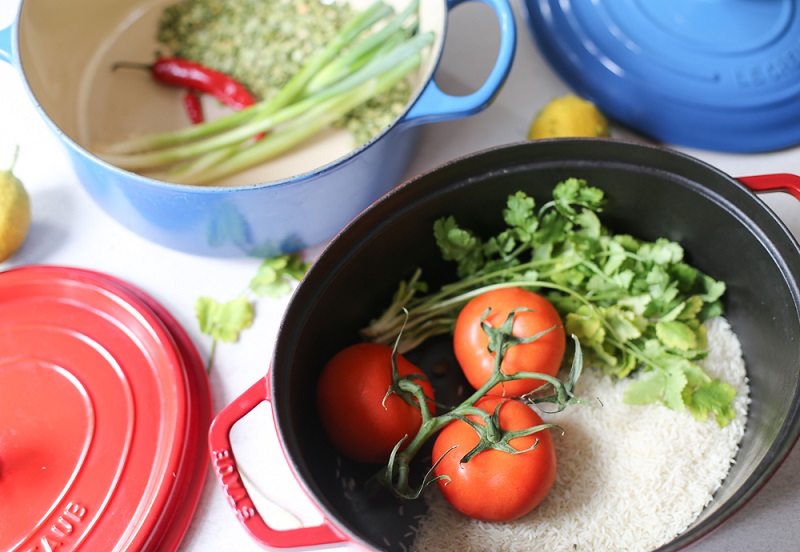
Cleaning:
Le Creuset
My Le Creuset occasionally needs a 5-10 minute soak with hot water to release any sticky areas – especially from oven cooking. However that is simply all that is required. A little hot, soapy water and a scrub from my trusty, cookware-friendly EcoBrush will always easily release any stubborn spots.Staub
The hardened enamel cooking surface of the Staub almost has a natural non-stick property which also helps with cleaning. I’ve never actually had anything stick onto the bottom too stubbornly, so cleaning is very simple – only a rinse and light scrub in hot soapy water.Conclusion:
For every day use at home with oven-to-table ease, I choose the all-rounded nature and classic style of Le Creuset. I love the colour range available, not only in the primary colours but interesting shades with depth such as Coastal Blue, Volcanic Orange and Mist Grey. This piece can sit out on your stovetop even when not in use, and evoke memories of warming aromas from a slow cooked rich stew on a wintry day. For feeding a crowd or for special occasions, the Staub works fantastically well for braising joints of meat.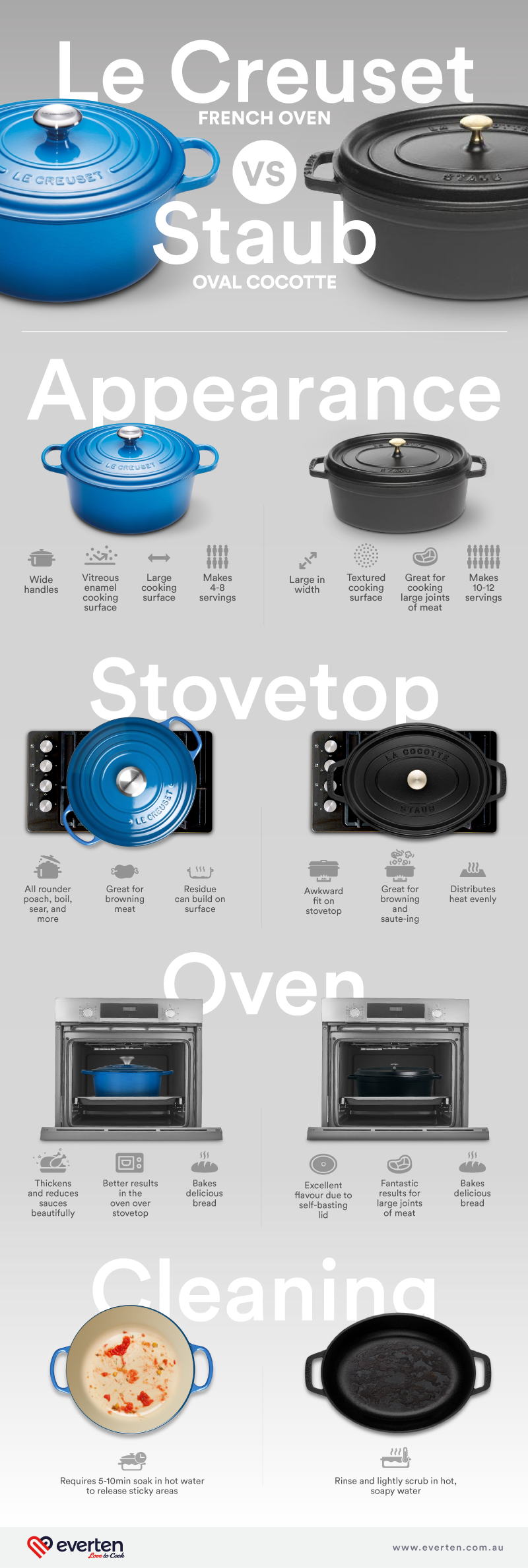
Next Read: How to Choose Le Creuset Colours for Your Kitchen



